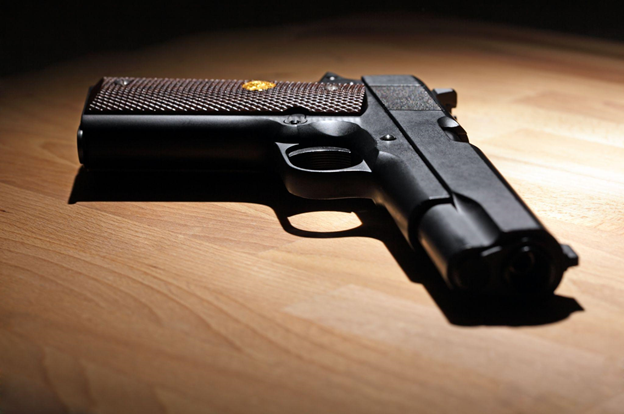(Major) 1911 Pistol Parts and What They Do
Apr 1st 2025
While some guns are more mechanically complex than others, all guns are a series of interconnected moving parts. This makes them, categorically, machines. The gun parts contained must be properly installed and work in sequence in order to deliver results.
This post will break down some of the main 1911 pistol parts you should understand, as you will need to become familiar with these if you ever want to perform your own repairs or make upgrades.
What Are the Main 1911 Pistol Parts?
Some of the main 1911 pistol parts are as follows.
- Pistol frame: The pistol frame is the main “gun part” here and is the part that is serialized and regulated as an actual firearm by the ATF. Therefore, an FFL transfer is required to buy a pistol frame. On other guns, the frame would be called the receiver, as this is the part to which all other gun parts either directly or indirectly attach. Most 1911-style frames are made of steel, but other pistol frames may be made of aluminum or synthetic polymers.
- Grips: A 1911’s grips are the components that screw into the sides of the frame and which provide a good grip (hence the name) for the shooter. They are commonly made of wood or composites.
- Barrel: The barrel is the component that traps gases, forcing the bullet to accelerate before leaving the bore. Conventional 1911 pistols are chambered in .45 ACP but many 1911 clones are built in different chamberings.
- Barrel link pin: The barrel link pin is responsible for retaining the barrel link during firing, and for unlocking the barrel at the appropriate moment during cycling.
- Slide: The slide is the component of the action that can be manually cycled and which contains the barrel, action, recoil spring and guide, along with several other vital components. The sights are also mounted to the slide. The reciprocation of the slide is what enables the action to cycle.
- Slide stop: The slide stop stops and locks the slide open when the firearm is out of ammunition, facilitating a visual inspection of the chamber and action.
- Sights: A 1911’s sights are the components that the operator uses to estimate the point of impact from the point of aim.
- Recoil spring and guide: The recoil spring stores kinetic energy as potential energy as it is compressed within the slide as the slide moves rearward. When the slide completes its rearward motion, the spring returns that energy by cycling the slide and action back into battery. The spring guide helps ensure fluid action cycling and prevents the spring from kinking, which would shorten its service lifespan.
- Firing pin and spring: The firing pin is the component that actually strikes the primer, igniting the propellant charge and firing the cartridge. The spring stores and releases the energy necessary to do so.
- Mag catch, lock and spring: The mag catch is the component that secures the 1911 magazine in the mag chute and locks it there, through the action of the lock and spring.
- Grip safety: Somewhat unique to 1911-style pistols, the grip safety is a safety that helps prevent negligent discharge by requiring a user to be holding the gun in order for the trigger to break.
- Trigger: The trigger releases the sear and mainspring, allowing the hammer to drop and strike the firing pin, igniting the primer and firing the gun.
- Mainspring, housing, and retainer: The mainspring stores the majority of the energy necessary to fire the gun.
- Sear, disconnector and spring: The sear is the part that holds the hammer back until the trigger is pulled, releasing the hammer and initiating the chain of events that fire the gun.
- Hammer: The hammer is an external component at the rear of the slide; it can be cocked or uncocked manually but the action of the slide will also automatically cock the hammer as the gun is fired.
- Extractor: The extractor is a small, claw-like device that engages the cartridge rim and pulls it free of the chamber as the slide moves rearward after firing.
- Ejector: The ejector is a spring-actuated part that forces the spent shell out of the gun’s action after firing.
- Magazine: The 1911 mag is the component that stores the cartridges and feeds them into the action, enabling the autoloading action of the 1911 pistol.
There are a few other 1911 pistol parts, but for the purpose of this article, this will cover the main items.

Here for Pistol Parts for Repair or Upgrade?
Regardless of whether you’re here for 1911 pistol parts for repairs or upgrades, we have an exhaustive inventory and a huge assortment of gun parts to meet your needs. Take a look through our collection of 1911 parts and if you’re looking for a specific pistol part you don’t see listed, get in touch with us directly at 610-250-3960.

